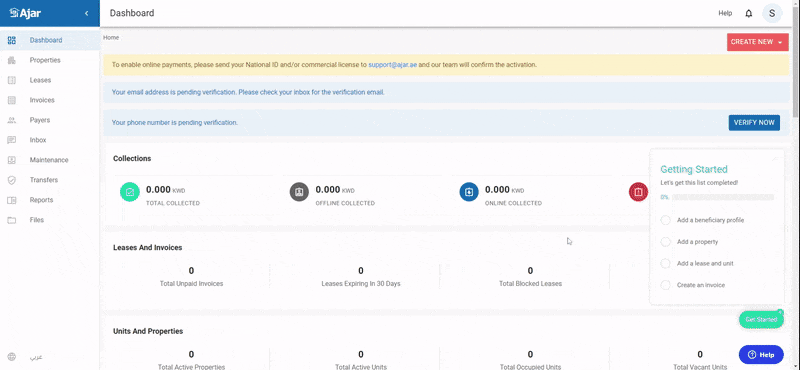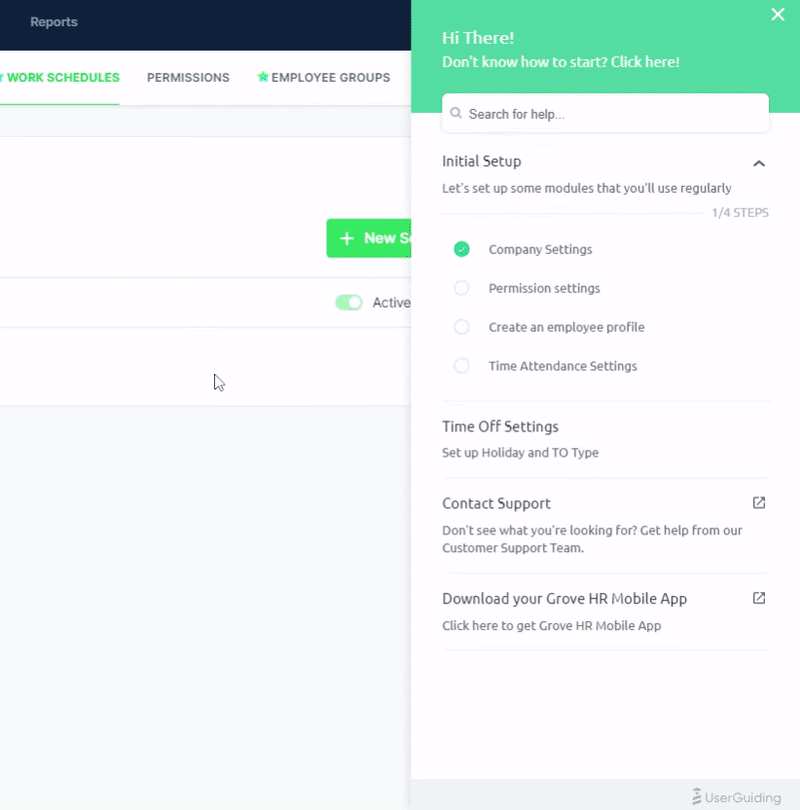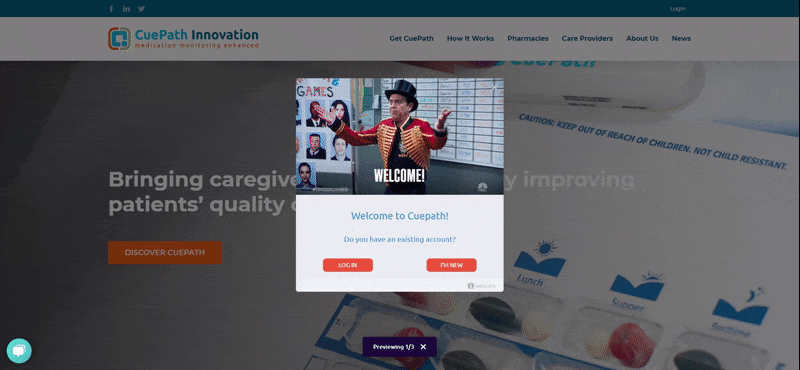

I don't know about you, but I've always been a sucker for self-service.
In restaurants, I always hated calling for a waiter. I'd just walk up to the counter and ask for what I needed.

Then one day, when I was 10, trying to get ketchup from the counter at a diner, my mom called me near and said, "if you do that yourself, and then everyone else serves themselves, the waitress won't have anything to do, and they'll fire her."
I did not move from my restaurant chair for the next 10 years.
But then it occurred to me that the waitress shouldn't have to lose her job. She could just be doing something more meaningful with the time she has.
Take it from me; it's exactly the same with user onboarding.
If you have the right type of business, that is.
So today, let's talk about:
- What white glove onboarding is,
- Some of the best white glove onboarding process examples,
- What self-service onboarding is,
- Some of the best self-service onboarding process examples,
- A detailed comparison of white glove and self-serve onboarding, and
- Which one is the perfect approach for you
Without further ado, let's get started with the definitions.
What is White Glove Onboarding?
White glove onboarding, often referred to as white-glove service as well, is a high-touch approach to onboarding experiences used especially for high-profile customers and users. The onboarding method is often used by sales teams or customer success teams and focuses on keeping customer experiences exclusively hand-held. Though it is hardly scalable for most businesses, white glove service is a viable and effective option for enterprises with few big contract customers.
Here's a quick look at a very simple white-glove onboarding user journey:

1️⃣ The white-glove service starts with a potential customer reaching out to sales, often after signing the contract, which happens after several sales calls and other correspondence.
2️⃣ Later, the customer onboarding process starts with 1:1 calls or through different documentation and onboarding material depending on the amount of white-glove onboarding assistance and the customer service required.
3️⃣ During onboarding, platform management, specific tools, access capabilities, and other topics are discussed while features and use cases are introduced to the users.
4️⃣ The users' accounts are then set up manually by an onboarding consultant or whoever is responsible for the initial setup of accounts (it's often CS managers).
5️⃣ Only then can a user move on to actually use the product they are paying for.
Now, as you can guess, the essential problem with white glove service and white glove onboarding is that it heavily relies on constant support and hand-holding throughout the customer journey.
Though it might come off as a traditional approach, when used right, it can work well to onboard important customers to advanced features during the initial setup and beyond.
Here is a great example of white-glove service and onboarding - with a twist.
White glove onboarding example: Next Fit

Next Fit, a management system for gyms and fitness centers located in Brazil, was your run-of-the-mill SaaS business using white glove onboarding as its go-to customer onboarding process.
The process was simple yet complicated in itself.
They would use video calls to explain product details to users and answer important questions on the spot.
But the problem was:
👉 There would be more than one single user that needed to learn how to use Next Fit,
👉 There weren't many employees to go through one on one video calls with each customer,
👉 Their new feature wasn't being adopted properly because of a lack of hands-on trial, and
👉 The support ticket prices weren't high enough to cover expenses
In hopes of finding a long-term solution, they decided to give tech-touch onboarding a chance.
After using UserGuiding, a no-code self-serve user onboarding solution, Next Fit not only reduced the number of video calls by 80%, but they also reduced support ticket numbers by 50% for their new feature.
Read the rest of the success story here 👈
Now, you might be thinking, "self-serve can NOT make that big a difference 🤯"
Well, it can.
Let's talk about self-service onboarding and how it can redefine your business approach if your business is the right fit.
What is Self-Service Onboarding?
Self-service or self-serve onboarding, also referred to as tech-touch onboarding, is an approach to onboarding that highlights user/customer capabilities and, instead of constantly hand-holding them, gives them the proper self-service tools and guides to make sure CSM. While self-serve onboarding has many similarities to low touch onboarding, it goes a step further and makes sure that, especially in initial experiences, contact with support is never required.
At this point, we might discuss a similar concept: product-led onboarding.
While product-led is a way more holistic business approach than tech-touch onboarding by itself, the concept actually serves the same purposes as tech-touch onboarding - with a more distinguished mindset.
Product-led onboarding necessitates using freemiums and then converting trial users upon showing product value using only the product.
Self-serve onboarding might have freemiums or not, but a self-serve onboarding approach seasoned with a bit of a product-led onboarding mindset can be the perfect strategy for acquiring and retaining customers.
Don't believe me?
Self-Serve Onboarding: #1 PLG Booster 🚀
Every time I try to think of a weak point of self-serve onboarding, I remember just how intertwined it is with product-led onboarding.
And if we are to remember the wise words of the number one product-led onboarding advocate, Ramli John, user onboarding is:
👉 Not an exercise for trying out a product but a process to see value,
👉 A cyclical process that has no end as long as the product grows,
👉 The first touchpoint where you need to plant the first seeds of value
And if you can design a self-serve onboarding process with these points in mind, you will not only be saving money but also the efforts of more than one team.
"But hey, I can keep doing white glove onboarding and mind these points."
Of course, you can.
But how scalable is it really?
Why not give a no-code user onboarding tool like UserGuiding a chance instead?
UserGuiding is one of the easiest tools to use on the market with an equally wide range of functionalities and affordable pricing, and an interactive guide like the one below (that I created in less than 5 minutes) is just the tip of the iceberg.
UserGuiding empowers product-led onboarding and self-service with:
✅ Interactive guides, product tours, walkthroughs,
✅ Tooltips, hotspots, in-app messages,
✅ User onboarding checklists,
✅ Resource centers,
✅ NPS surveys and more
All features powered with powerful analytics, segmentation and targeting, customization, and affordable pricing.
👉 Give UserGuiding a try, for FREE 👈
Now that we are on the same page let's take a look at some cool examples of self-service onboarding.
Self-service onboarding examples
1- Ajar

Ajar is a property payment management solution located in Dubai, and their onboarding was mainly white-glove.
Up until they met decided one on one video calls were not scalable anymore.
After adopting the no-code self-serve onboarding software Userguiding, they managed to save a lot of time in both customer success and customer support teams while also decreasing costs.
Their self-service onboarding process includes of a welcome modal, a custom input field form, and a user onboarding checklist.
Read the rest of the success story here 👈
2- Grove HR


Grove HR is an all-in-one HR platform that is currently empowering over 5000 SMBs around the world.
Having so many customers, being available 24/7 was not an option; it was a need.
But of course, even with a fleet of customer support agents, it is not always guaranteed that you will please your customers; plus it was costly to say the least. So instead, Grove HR decided to give self-service onboarding a go.
With UserGuiding, they managed to create interactive guides, onboarding checklists, slideout modals, and more to make sure users go through a smooth initial onboarding.
Later, they also utilized the resource center feature to give users direct access to guides and support material in-app.
Right now, Grove HR doesn't need the developer team to code and maintain the onboarding processes, and the support team can finally catch a breath.
Read the rest of the success story here 👈
3- CuePath

Cuepath is a medicine monitoring solution especially directed at senior users. Having such an audience, onboarding users wasn't the easiest business process for Cuepath to resolve.
Cuepath's customer support team was receiving an abnormal amount of support calls. As a small business, there was a need for a solution that would relieve customer support while also making Cuepath more scalable as a business.
After adopting UserGuiding's self-service onboarding solution, in a matter of 6 months, Cuepath's support calls have dropped by 72% on top of achieving shorter onboarding times and enhanced user engagement.
Read the rest of the success story here 👈
Now that we know what white glove and self-service are, and we are familiar with examples of both, let's make a detailed comparison of the two customer service options.
White Glove vs. Self Service - a detailed comparison
As you might have realized by now, though they essentially serve the same purpose, there are many differences between white glove and self-service onboarding.
Here's a quick detailed look:

User Experience
In terms of user experience, there is a huge difference between white glove and self-serve.
First of all, with white glove onboarding, a good chunk of the user experience takes place outside of the product.
Meanwhile, it is the exact opposite when it comes to self-serve; though a good chunk of the onboarding experience is in-app, users still receive onboarding emails and other outside-of-app material.
Format
The format of the onboarding is almost entirely different from the two different onboarding methods.
White glove onboarding might make use of video calls, phone calls, emailing, customized user documentation, and even face-to-face meetings.
On the other hand, self-serve onboarding happens in-app, mostly through user guides, product walkthroughs, and in-app messages.
Service Provider
When onboarding a user with the white glove method, the presence of a sales rep or CSM is almost always required. Even when the user does not directly interact with a representative, a customer support agent or any other provider is always available to help in real time.
Self-service, as the name suggests, is pretty much wholly dependent on the user and their ability to self-serve themselves. Of course, the use of onboarding solutions comes in handy in enhancing the users' ability to self-serve, and in the event that self-serve isn't possible, most companies offer customer support.
Cost
Lastly, there is often a big difference between the pricing of white glove onboarding and self-service onboarding.
White glove onboarding requires a team of representatives working on the onboarding materials and processes of customers, as well as dedicated tools for onboarding such as CRMs, communication software, email solutions, and more.
On the other hand, designing and maintaining an in-house onboarding sequence might also cost a good amount. However, using a third-party no-code tool might reduce these costs quite significantly.
Verdict: which one is for you?
So, the most critical point of the whole article: white glove or self-serve onboarding; which one is for you?
The decision is easier than you'd think, as white glove has an extremely specific use case.
If your business:
👉 Has a few enterprise-level customers closing big contacts yearly,
👉 Has a team of representatives that can handle one on one training sessions with the customers and prepare customized onboarding material,
👉 Can afford 24/7 customer support,
👉 Has a product that is too complex to onboard users through no-touch interactive guides,
You need a white glove onboarding solution.
But if your business:
👉 Has many customers with smaller, basic level plans that buy monthly,
👉 Does not have a big sales team or CS managers to give guidance to enterprise level or other customers constant care,
👉 Cannot afford 24/7 customer support OR would rather invest in self-service support options,
👉 Has a product that is not too complex for in-app onboarding,
You need a self-service onboarding solution.
To Wrap Up...
Whatever your business type or size might be and whichever onboarding method you choose, what counts is that you give effort and time to make it the best fitting onboarding experience for your customers.
And to do that, be it white glove or self-serve, UserGuiding might have a feature you might want to give a try.
Good luck with your user onboarding!
Frequently Asked Questions
What is white glove onboarding?
White glove onboarding is a high-touch onboarding method for high-profile customers. The onboarding method is specifically used for enterprise customers to provide them with seamless, hand-held onboarding and constant support whenever they need it. However, this type of onboarding might be too costly or frustrating for users if not used by the right type of business.
What is the self-service approach?
The self-service approach is a general approach to customer-facing businesses that points out the importance of letting users help themselves. In the onboarding context, it refers to the use of in-app user flows and user experience patterns to provide users with a low-touch or no-touch onboarding experience.
Why is self-service better?
The self-service onboarding method is not necessarily superior to the white glove onboarding method, however, it is true that self-service is viable and easier to implement for a larger amount of businesses and thus is a better option for many.

















.svg)
.svg)
.svg)
.svg)
.svg)

.svg)
.svg)












.svg)
.svg)




.png)
















